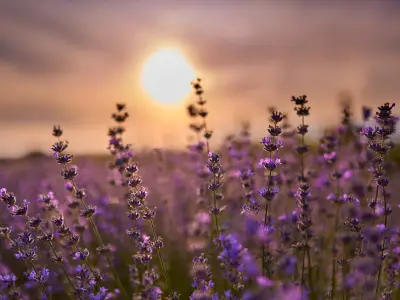When you go down to the woods today, you’re sure to be met with a delight for the senses. The smell of budding flowers, the touch of the pines beneath your feet, the sound of birdsong. But if you know where to look, your taste buds might find a treat, too. The respectful and safe foraging of food can bring joy at every turn. Perhaps one of the most beloved items to add to our culinary cookbooks is the wild mushroom. But with the lovely tastes and fragrances of the mushrooms comes the potential for danger. Stay safe, with our guide to wild mushrooming.
Wild Mushrooming: The Mushroom Anatomy
To safely embark on your wild mushrooming journey, you’ll need to be able to identify the mushrooms that are edible.
Here are the key components of a mushroom that you’ll need to be able to recognise:
- Cap
- Stem
- Flesh
- Gills
- Spores

Wild Mushrooming: 12 Safe-To-Eat Mushrooms of the Woods
- Chanterelles (pictured below)
- Horns of Plenty
- Cap
- Morel
- Wood Blewit
- Hedgehog Fungus
- Chicken of the Woods
- Oyster Mushroom
- Cauliflower Fungus
- Honey Fungus
- Saffron Milkcap
- Velvet Shank

Wild Mushrooming: 6 Safe-To-Eat Mushrooms of the Meadows
- St. George’s
- Parasol
- Field mushrooms
- Giant Puffball
- Fairy Ring champignon
- Shaggy Ink Cap
Wild Mushrooming: 4 Psychotropic Mushrooms
- Liberty Caps
- Wavy Caps
- Psilocybe Fimentaria
- Fly Agaric (pictured below)
Please note: While psychotropic mushrooms hold an interesting place in the history of botany, they are now illegal to possess (in the UK). Should you come across any of these mushrooms, to forage, and thus possess, them would be a criminal act.
.

Wild Mushrooming: Recipes for Your Foraged Mushrooms
Mushrooms are such a fragrant addition to many dishes. Lots of foragers favour them in soups and pies, to bring out the flavours of other ingredients. However, they can also carry a dish in their own right, such as in delicious pasta or salads. Here are two recipes to whet your appetite.
Horn of Plenty Tricolour
- 250g Horns of Plenty (Black Trumpet)
- 500g tricolour pasta (you can use risotto as an alternative to pasta)
- 500g baby spinach
- 3 cloves of garlic
- 1 tub of soft cream cheese
- Splash of milk
- 1 tbsp of butter
Method:
- Set your pasta to boil and heat butter in a pan.
- Fry the mushrooms in the butter until soft.
- Add in the chopped garlic and fry for a few minutes.
- Next, add in the cream cheese and splash of milk to slacken off the sauce.
- Add the spinach into the pan for just a minute to allow light wilting.
- Drain the pasta and then stir in the mushroom sauce with spinach before seasoning and serving.

Oyster Mushroom Stir Fry
- 400g oyster mushrooms
- 250g egg noodles
- 1 onion
- 1 garlic clove
- A handful of foraged greens
- 1 small piece of root ginger
- 60ml soy sauce
- 60ml lime juice
Method:
- Finely slice the onion and begin to stir fry in a wok.
- When the onion begins to soften, add the garlic and grate in the ginger.
- Add the mushrooms and stir fry for a couple of minutes.
- Throw in the greens.
- Put the noodles on a boil for just a few minutes.
- As your noodles cook, pour in the lime and soy and let it bubble.
- Drain the noodles and toss them through the stir fry.
- Season and serve.

As you can see, the joys of wild mushrooming can accompany you from field to kitchen and, with such a wealth of growth, you can extend your foraging and cooking repertoire without going very far.
If you’d like to learn more about identifying mushrooms, the Centre of Excellence Foraging Diploma Course outlines what you need to look out for to identify all the mushrooms discussed here.
But why stop at wild mushrooming when there’s so much more out there to be discovered, from dandelions to plantains by way of herbs, spices, and berries. It’s the ultimate way to feed yourself for free!

Just make sure to respect Mother Nature’s Bounty by following some simple rules:
- Don’t forage on private land or in areas of special conservation where the ecosystem is in a delicate balance.
- Take only as much as you need and only when there is bountiful growth - remember, other animals rely on these plants!
- Do not damage surrounding plant life as you forage and leave no trace on the environment.
- Stay safe with protective clothing, such as gardeners' gloves, and be aware of your surroundings.
Lastly, enjoy your first foray into foraging! May it be fruitful for you!
At the time of publishing, entering the code LEARNING in the checkout will reduce the price of our
Foraging Diploma Course to £29.





